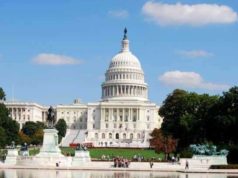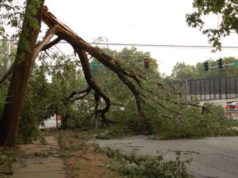
The Pull vs. Push Dynamics of Illegal Immigration: Understanding the Root Causes of Unauthorized Entry
Introduction:
The issue of illegal immigration is a complex one, and it can be challenging to determine what motivates individuals to enter a foreign country without authorization. However, a great deal of research has been carried out in order to understand the dynamics of illegal immigration and what motivates it. One theory that has been widely discussed is the pull vs. push dynamics of illegal immigration. This article aims to explore this theory, what it entails, and how it can help us better understand and address illegal immigration.
Understanding Pull Factors:
Pull factors are the conditions or circumstances that attract individuals to migrate to a particular country or region. In the case of illegal immigration, pull factors can be things such as economic opportunities, political stability, or access to resources. For example, the United States is known for being a land of opportunity and has a robust economy, which can be a powerful magnet for people seeking better lives.
Understanding Push Factors:
Push factors, on the other hand, are the conditions or circumstances that cause individuals to leave their homes or native countries. These factors can include things like war, political instability, poverty, etc. For example, the high level of poverty that exists in many Latin American countries can be a push factor that drives individuals to seek better opportunities in other countries, such as the United States.
The Correlation Between Pull and Push Factors:
Illegal immigration occurs when the pull factors of a country or region outweigh the push factors of a native country. In other words, when individuals are pushed out of their homes or countries because of poor living conditions or lack of opportunities, they are drawn to other countries where those opportunities may exist.
The Role of Policies:
The pull vs. push dynamics of illegal immigration are influenced by government policies. For example, policies that provide a pathway to citizenship can be seen as a pull factor that attracts individuals to migrate to the United States. On the other hand, policies that restrict immigration can be seen as a push factor that makes it difficult for individuals to access economic and social opportunities.
Conclusion:
Understanding the pull vs. push dynamics of illegal immigration is critical for addressing the root causes of unauthorized entry. While pull factors will always exist, policymakers can work to reduce the push factors by creating policies that address issues related to poverty, political instability, and lack of resources. Doing so can create a more stable and productive environment for individuals, reduce illegal immigration, and improve social cohesion in both sending and receiving countries. Ultimately, it is about creating an environment where individuals can thrive, regardless of where they are from.
With the evolution of any science, previously-accepted ideas are frequently subject to both modification, and at times, disposal in order to pave the way for new, better hypotheses. For the sake of an analogy, the notion that the Sun revolved around the Earth was maintained for centuries before Galileo and others directly challenged these views and proposed the heliocentric theory, which we now know to be the correct supposition.
As with the study of migration, an argument was posed that questioned the ability to legally define, or correlate the autonomous migrations of human beings – in both large and small scales. The work of scientists such as Ernest Ravenstein in the late 1800’s proposed the presence of quantifiable forces at work behind mass migrations of people. Specifically, there are “push” and “pull” factors that impact an individual’s decision to migrate; more often that not, it is indeed a conscious resolution for him or her to relocate.
Regarding the former, ‘push” factors, are factors that influence people to find a new home in that they create disadvantageous conditions for those who reside there. These conditions can manifest themselves in the form of a political or environmental crisis, (e.g. war; earthquake
The plight of the migrant worker is one that is both very lamentable, yet very real. However, the countries that house illegal migrant workers who have entered the country illegally are also burdened by the adverse of effects of their residence.
The United States is just one of the developed countries in the world that faces this dilemma. While an illegal migrant worker may claim a lower wage in return for an American employer’s silence on their undocumented status, for those migrant workers without health insurance or even those illegal aliens without jobs, hospitals and public assistance may have to foot the bill.
Yet, America often feels compelled to protect the migrant worker who is a violator of domestic immigration law. In part, there is recognition among the higher-ups in our government that many migrant workers are indeed hard workers without any history of criminality in the United States, and deporting an individual migrant worker might cause the dissolution of a family when some relatives have achieved legal status by right of birth or naturalization.
More than this, though, the pull factors of these life of an illegal migrant worker in the United States are major components of criticism against mass deportations of illegal immigrants. Even prior to the 1900’s, America was a home for legal migrant workers from Europe and China Mexico.
























